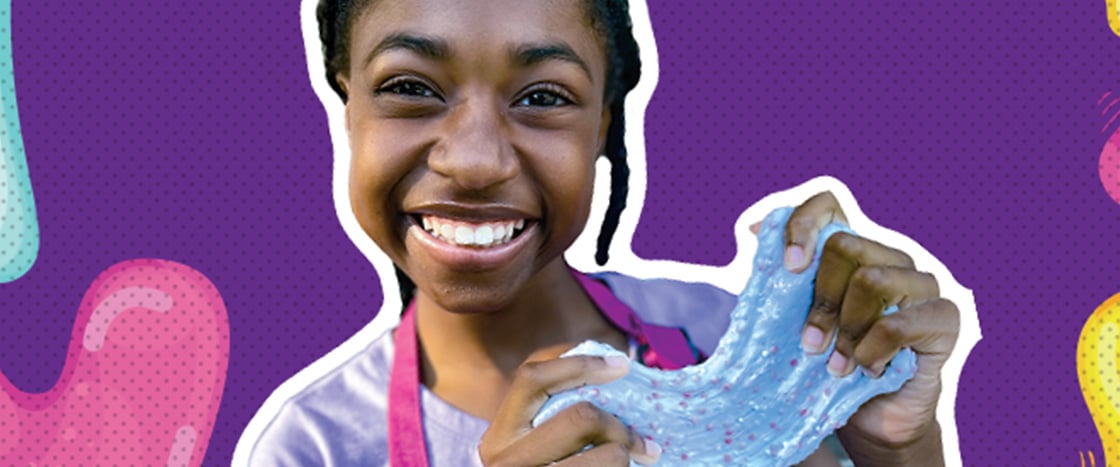What can you roll into a tight ball, stretch out into long strings, or let drip through your fingers? You guessed it—it’s slime! Whether bought from stores or made at home, slime is all the rage. But have you ever wondered what slime really is?
Most slime is made by mixing craft glue, water, and a substance called an activator. (At home, people often use baking soda and contact lens solution to make the activator.) When these ingredients are combined, a chemical reaction takes place. Long particles in the glue connect with small particles in the activator. The result is a material that is stretchy, squishy, firm, and fluid all at the same time!

